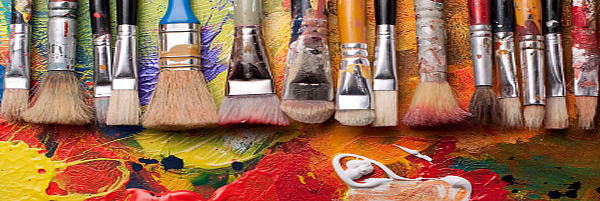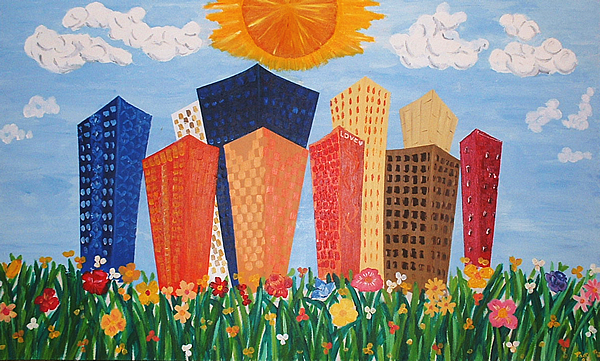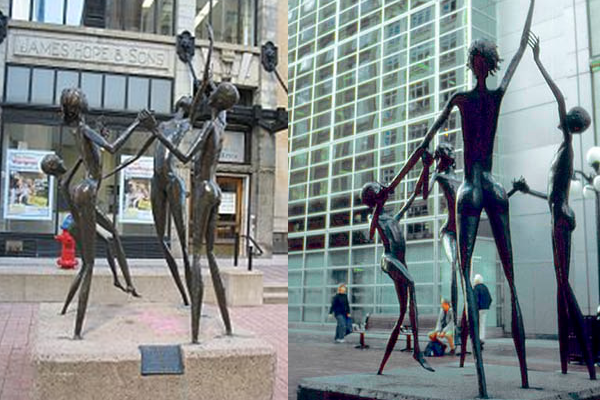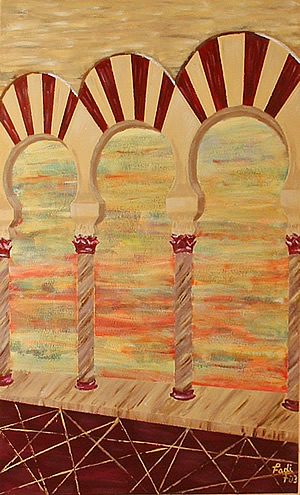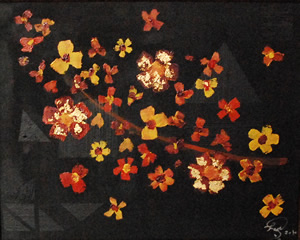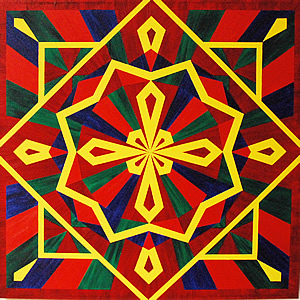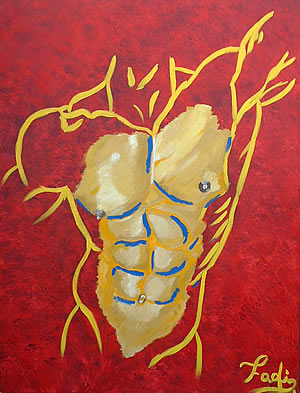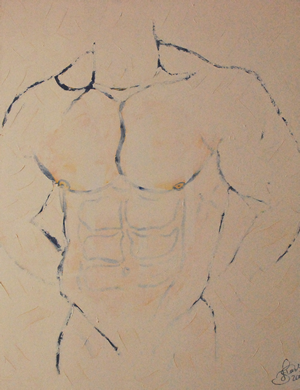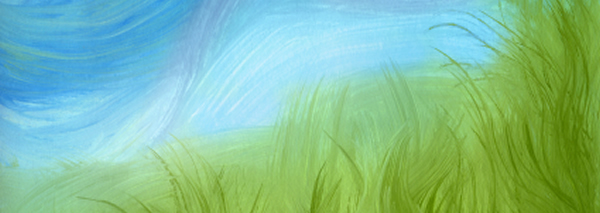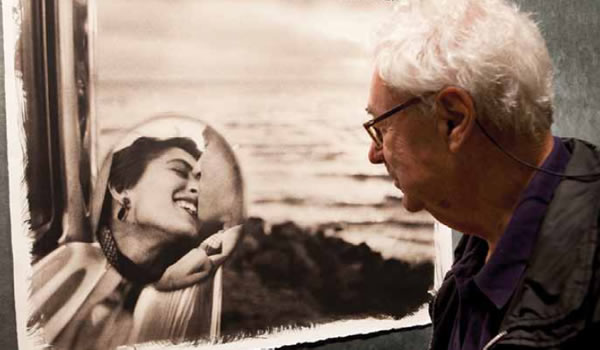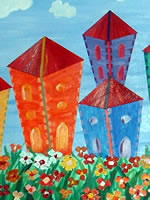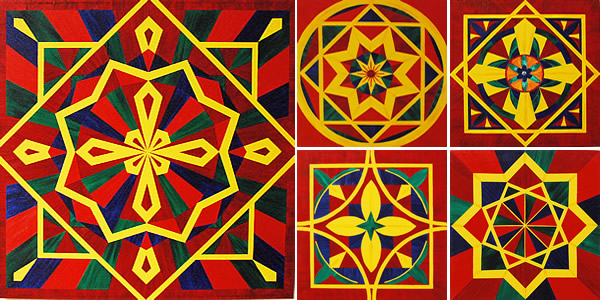 When I was a child growing up in Lebanon, I was entranced by the beauty that surrounded me. It was an intoxicating whirlwind of both natural and manmade wonders, from the forests to the architecture and artwork of my town. In my paintings, I often refer to scenes, images and memories from this rich and evocative childhood home, as evident in my 5-piece Geometric Series.
When I was a child growing up in Lebanon, I was entranced by the beauty that surrounded me. It was an intoxicating whirlwind of both natural and manmade wonders, from the forests to the architecture and artwork of my town. In my paintings, I often refer to scenes, images and memories from this rich and evocative childhood home, as evident in my 5-piece Geometric Series.
I can remember going to church and being mesmerized by the colourful patterns adorning the walls and windows – I was drawn in by the intricacy of the artwork, and the bright colours that lit up the space. When I walked into rooms or buildings decorated in the traditional Arabic style, I was struck with similar sensations: the patterns and shapes were like those I saw in church, but still with a style all their own, laden with their own unique mystery and power. The realization that these shapes and images were used within both cultures, Christian and Muslim, moved me profoundly – in art, there was a unity, there was cohesion, there was, just as the intricate patterns suggested, a harmony that could be found.
These encounters had a lasting impression on me; they shaped me as an artist and as a person. When I came to Canada, I called these memories up from the depths of my being, and began to paint. What came from this is my Geometric Series. In many ways, what I have attempted to produce in this series are pieces that reflect a merge of the two cultures I experienced. I have engaged with iconography of both cultures, such as the cross and the octagon. While these paintings can be hung separately, they were designed as a series to reflect a unification of two cultures within the artistic realm.
The shapes that I have engaged with are further shaded by memories of the natural beauty that was my playground, my backyard! In the Middle-East, there is a popular flower that I knew as a marguerite – in the English speaking world, you would know it as a daisy. These yellow daisies grew very high –as a child, they were almost taller than me! Around Easter, we used to gather up these flowers and cook our eggs with them; the daisies turned the eggs a bright, yellow hue, and infused them with a unique and delicious flavour. My nod to this experience can be seen in both the use of the bright yellow colour and of the petal shapes within this series.
For me, art and the process of creation come from a very genuine place within me; always behind my paintings is the desire to share a story. The pieces in my Geometric Series came from recalling scenes from my childhood; they are an attempt to evoke some of the same feelings of wonder and joy I had when surrounded by such powerful images and scenery.
Related Paintings :
